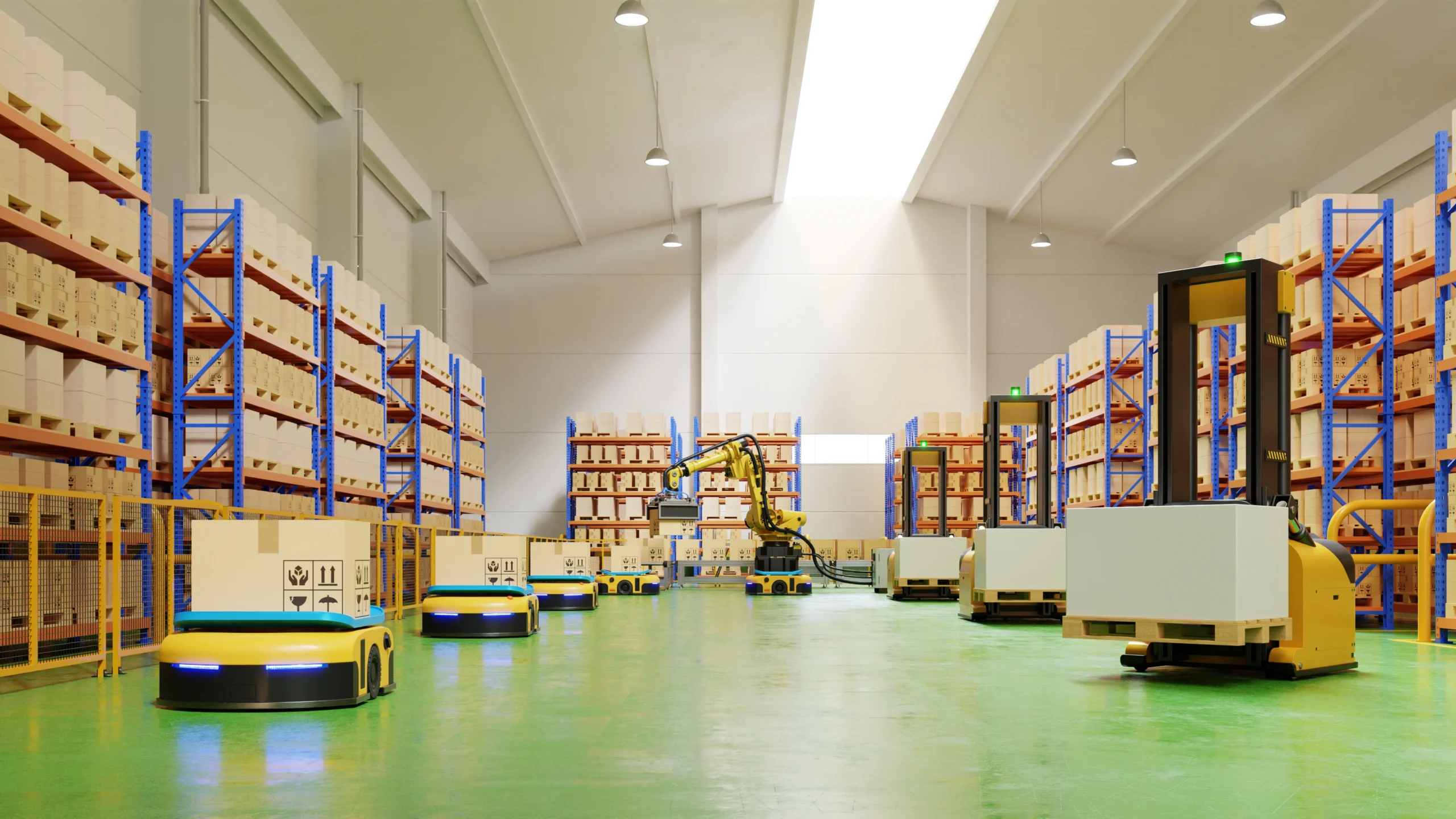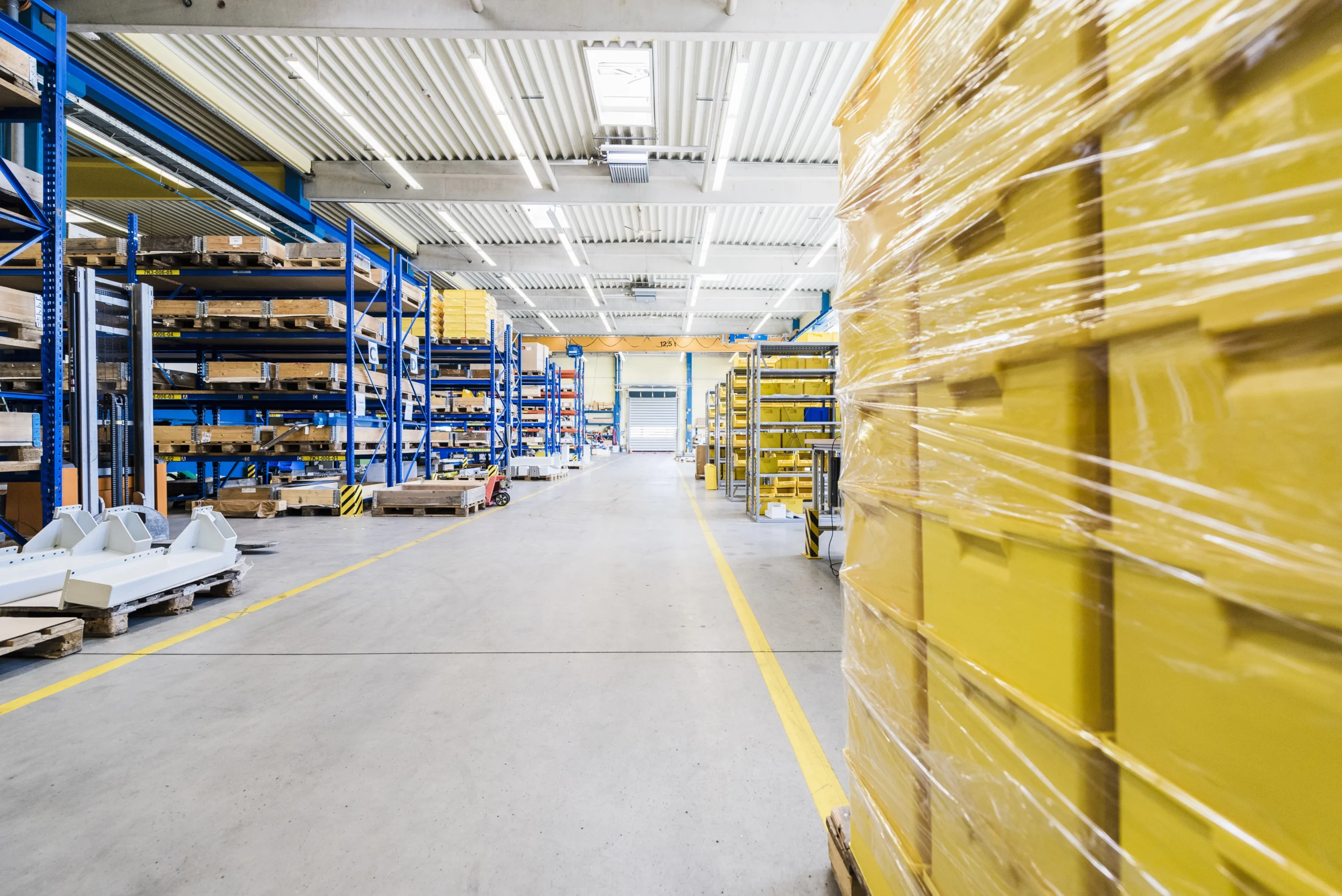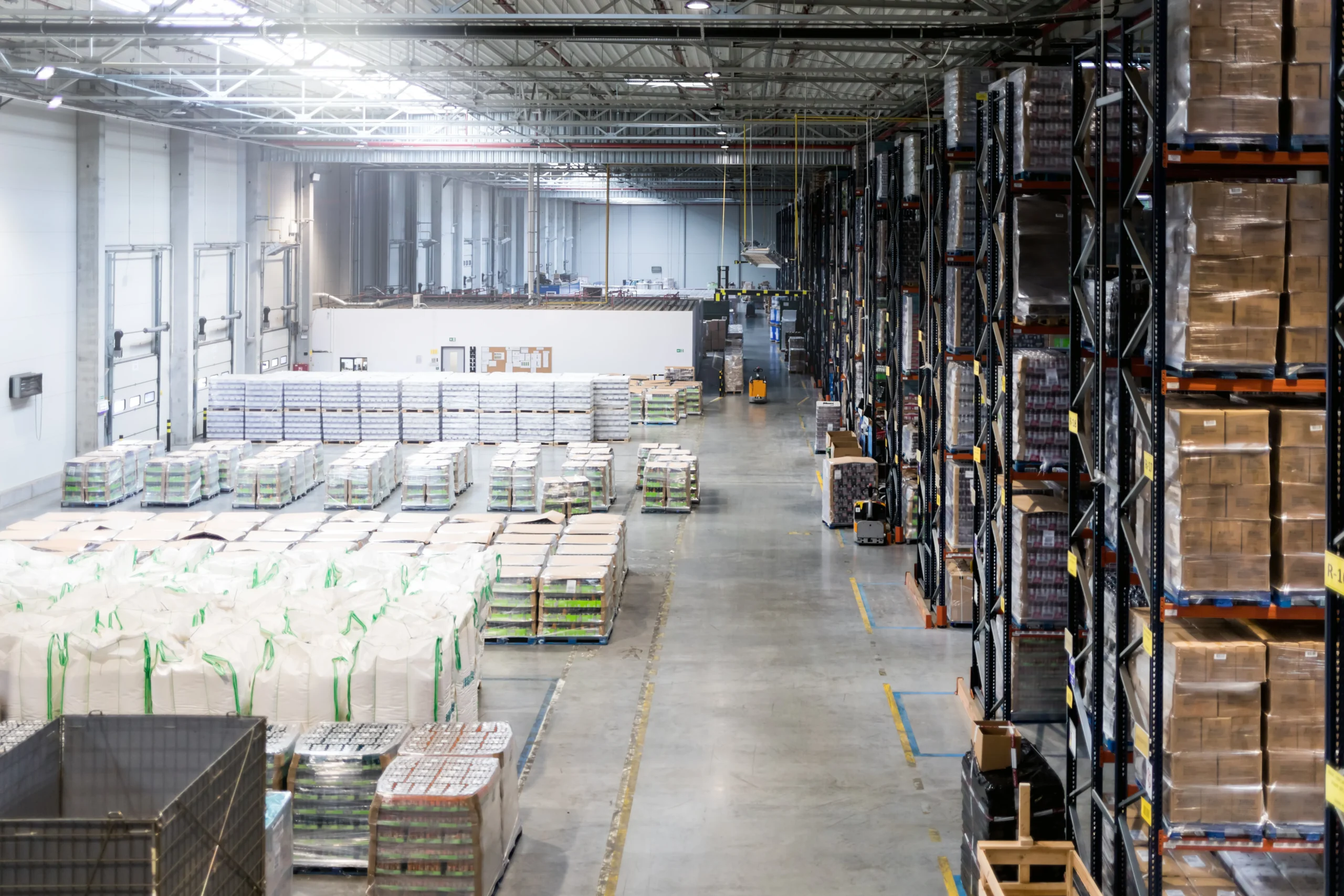Table of Contents
ToggleCross-docking is a logistics strategy that moves goods directly from incoming shipments to outbound vehicles with minimal or no storage time in between. Think of it as a high-speed distribution hub where products are constantly on the move.
For businesses, this means faster deliveries, reduced storage costs, and streamlined supply chain operations. For example, imagine a toy store chain receiving shipments from various manufacturers.
Instead of storing these toys in a warehouse, they are quickly sorted and sent directly to individual stores. By doing this, the toys go straight from the supplier to the shelves, saving time and money while keeping inventory lean.
At Tri-Link FTZ, we’ve honed cross-docking practices to a science. Over three decades of experience in third-party logistics and foreign trade zones have given us unmatched expertise in streamlining supply chains.
In this post, I’ll share insights and examples from our journey, showing you how cross-docking can transform your business.

When discussing cross-docking warehouse examples, it’s impossible not to mention Walmart. Walmart has perfected this strategy by placing its distribution centers near major transportation hubs.
Their facilities receive shipments from suppliers, sort them by store location, and send them out—often within hours. This process minimizes storage and ensures that products are on the shelves when customers need them.
Amazon also demonstrates the power of cross-docking. Their fulfillment centers operate with precision, combining orders from various suppliers and sending them directly to customers.
This approach allows Amazon to meet its famous two-day (or even same-day) delivery promise. At Tri-Link FTZ, we’ve seen firsthand how critical this approach is for e-commerce businesses needing to stay competitive.
Another example comes from Toyota, a leader in just-in-time (JIT) manufacturing. Their cross-docking strategy ensures that parts arrive at assembly lines exactly when needed.
This eliminates storage costs and keeps production running smoothly. These examples highlight how cross-docking adapts across industries, from retail to manufacturing, enhancing efficiency and cutting costs.
The advantages of cross-docking go beyond simply saving on storage costs. One of the most significant benefits is improved efficiency.
By reducing the number of times products are handled, cross-docking minimizes the risk of damage and speeds up the entire logistics process. At Tri-Link FTZ, we’ve seen businesses cut delivery times by up to 50% using this method.
Another critical benefit is cost savings. By eliminating the need for extensive warehousing, businesses reduce expenses associated with real estate, utilities, and labor.
Cross-docking also streamlines transportation, consolidating shipments to optimize routes and reduce fuel costs. For time-sensitive products like perishable goods or high-demand items, cross-docking is a game changer.
By keeping goods constantly moving, businesses can maintain fresh inventory and quickly respond to market demands. This agility is something we prioritize for our clients, especially those in fast-moving industries like food and beverage.
Sustainability is another overlooked advantage. Fewer storage requirements and optimized transportation reduce the environmental impact of logistics.
As companies increasingly prioritize green initiatives, cross-docking offers a practical way to align supply chain operations with sustainability goals.
Certain industries are naturally suited to cross-docking, and it’s no coincidence that these industries often experience the highest efficiency gains. Retail chains, like Walmart and Target, benefit greatly because of their need to distribute high volumes of products quickly to multiple locations.
E-commerce businesses, too, thrive on cross-docking, as it helps them meet tight delivery windows while keeping inventory lean. Manufacturing companies, especially those practicing just-in-time production, also find cross-docking indispensable.
For example, automotive manufacturers rely on this strategy to deliver parts to assembly lines without holding excess inventory. Similarly, businesses handling perishable goods—like grocery suppliers or cold chain logistics companies—benefit from the reduced storage time, ensuring their products stay fresh.
From my experience at Tri-Link FTZ, the key to deciding if cross-docking suits your business is understanding your supply chain’s unique demands. High demand variability, consistent shipping volumes, or the need for fast delivery are all indicators that cross-docking could be a game changer for your operations. Read more.

Cross-docking relies heavily on technology to ensure smooth operations. A robust Warehouse Management System (WMS) is essential for coordinating incoming and outgoing shipments.
At Tri-Link FTZ, we’ve implemented advanced WMS tools that provide real-time inventory tracking and streamline sorting processes. Automation plays a significant role in cross-docking facilities.
Conveyor systems, robotic sorters, and smart devices speed up the movement of goods while reducing manual labor. For example, DHL Supply Chain has integrated smart glasses into their operations, allowing workers to sort and pack items more efficiently.
Strategic facility design is another critical component. Cross-docking warehouses need ample dock space to accommodate simultaneous inbound and outbound shipments.
Their location also matters—placing facilities near major transportation hubs or customer markets reduces transit times. Finally, data analytics and forecasting tools are invaluable for predicting demand and scheduling shipments.
By leveraging these technologies, we’ve helped our clients at Tri-Link FTZ optimize their supply chains and achieve faster turnaround times.
Despite its benefits, cross-docking isn’t without challenges. One of the most significant hurdles is coordination.
Precise timing between inbound and outbound shipments is essential, and any delays can disrupt the entire process. At Tri-Link FTZ, we’ve mitigated this risk by using advanced scheduling software and partnering with reliable carriers.
Infrastructure costs can also be a barrier for businesses new to cross-docking. Specialized facilities, equipment, and technology require upfront investment.
However, starting small and scaling gradually can make the transition more manageable. Another challenge is quality control.
With goods moving quickly through cross-docking facilities, there’s little time for thorough inspections. Implementing robust quality checks at critical points in the process helps address this issue.
Scalability is another consideration. As demand fluctuates, cross-docking systems must adapt without compromising efficiency.
By designing modular facilities and investing in flexible technologies, we’ve helped clients overcome this challenge and scale operations effectively.
Choosing the right cross-docking warehouse is crucial to success. One of the first factors to consider is facility layout.
Efficient workflows depend on seamless inbound and outbound operations, so the design must minimize bottlenecks. Location is equally important.
A well-placed warehouse near transportation hubs or key markets can significantly reduce delivery times. At Tri-Link FTZ, we’ve strategically positioned our facilities to maximize accessibility and efficiency.
Technology integration is another key consideration. The warehouse should be equipped with advanced WMS and automation tools to handle sorting and scheduling.
Finally, ensure the warehouse can handle your specific product types. For instance, perishable goods require temperature-controlled environments, while high-value items demand heightened security measures.
By evaluating these factors, you can choose a warehouse that aligns with your business needs. Read more.

Cross-docking isn’t just efficient; it’s also environmentally friendly. By reducing the need for large warehouses, businesses consume less energy for heating, cooling, and lighting.
At the same time, fewer storage requirements mean less packaging waste, which directly reduces environmental impact. Transportation efficiency also plays a role.
Consolidated shipments lead to fewer trips and lower fuel consumption, reducing greenhouse gas emissions. This aligns with the growing emphasis on sustainability in supply chains.
At Tri-Link FTZ, we’ve worked with clients to implement eco-friendly cross-docking practices, helping them meet both their operational and environmental goals. Whether it’s optimizing routes or reducing material waste, sustainability is woven into everything we do.
Transitioning to a cross-docking model requires careful planning. The first step is assessing your supply chain needs.
Determine if your products and operations align with cross-docking’s fast-paced logistics. Next, invest in the right technology.
A WMS system and automation tools are essential for managing the flow of goods. At Tri-Link FTZ, we’ve seen clients achieve remarkable efficiency gains by upgrading their technology infrastructure.
Training your staff is another critical step. Cross-docking requires precision and coordination, so your team needs to understand the processes thoroughly.
Finally, start with a pilot project. Implement cross-docking on a small scale to identify challenges and refine operations before scaling up.
This approach minimizes risks and ensures a smoother transition.
Cross-docking is a transformative logistics strategy that can significantly enhance supply chain efficiency, reduce costs, and improve delivery speed. By eliminating the need for long-term storage, businesses can streamline their operations and adapt quickly to changing market demands.
As we’ve seen through examples from Walmart, Amazon, and Toyota, cross-docking is not only feasible but also highly effective across various industries.
At Tri-Link FTZ, we’ve spent 35 years perfecting logistics solutions, including cross-docking, for businesses of all sizes. We’ve witnessed firsthand how this strategy can lead to reduced inventory costs, faster order fulfillment, and improved customer satisfaction.
Whether you’re a retailer, manufacturer, or service provider, the key to successful cross-docking lies in careful planning, the right technology, and strategic partnerships. By implementing a robust Warehouse Management System, training your team, and leveraging real-time data, you can overcome common challenges and unlock the full potential of cross-docking.
At the same time, you’ll be contributing to a more sustainable logistics model, reducing environmental impact while improving your bottom line. If you’re ready to explore how cross-docking can revolutionize your supply chain, reach out to us at Tri-Link FTZ.
Our team of experts is here to guide you every step of the way, from initial assessment to full-scale implementation. Let’s work together to create a faster, leaner, and more sustainable supply chain for your business.
Share this article
We have other resources available upon request as well as one-on-one support and personalized answers, just like our services.
Simply contact us anytime and we’ll get back to you to answer your questions and provide meaningful answers that show you how Tri-Link supports your logistics, reduces costs, and accelerates efficiency.
Tri-Link delivers exceptional FTZ and 3PL services tailored to your global trade needs.
Our solutions combine innovation, quality, and efficiency to exceed your expectations and meet your specific requirements.